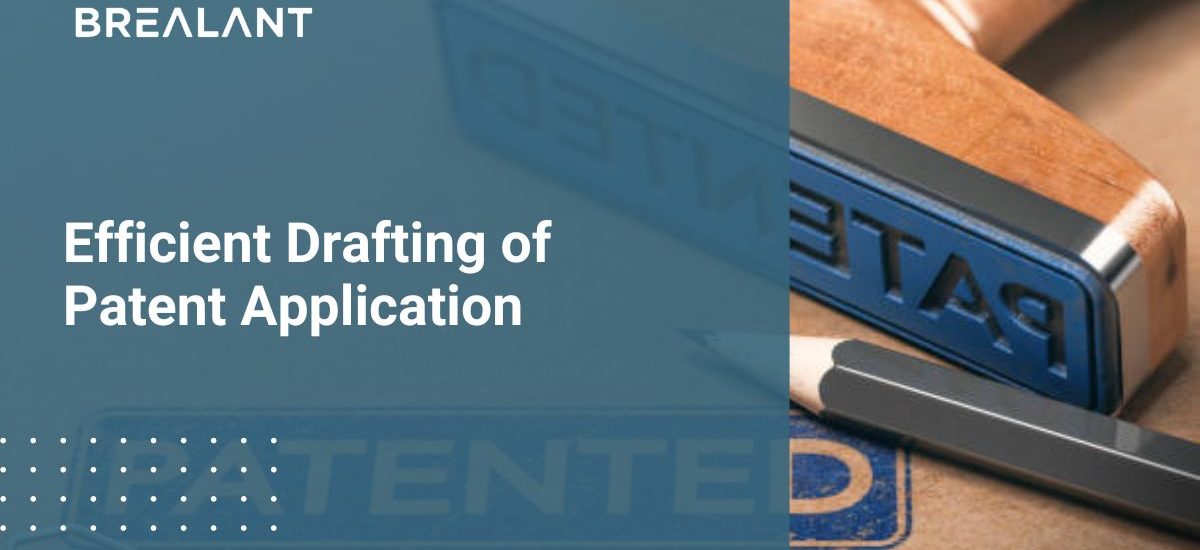Do you have a patent application that is ready to be filed? Are you stuck in the drafting stage? The patent application drafting process can be a time-consuming and frustrating ordeal. The wrong approach to this stage can lead to mistakes that could affect your chances of success. Research has revealed that patent application drafting can be one of the most significant catalysts for innovation, growth and business success. Here are some tips that will help you efficiently draft your product/process patent application.
An invention that satisfies all of the accompanying technical requirements is protected by a patent. For an innovation to qualify for a patent, three conditions must be met.
- The innovation must be new
- have potential for industrial use.
- It must entail creative measures.
If you want to protect your invention and achieve patent protection, it is important to follow a specific protocol when assembling the document. The key steps are:
- identification,
- description,
- claims,
- drawings,
- PPAPs (patent publication allowance),
- references, and
- abstract.
The most important part of drafting the patent application is claim. The legal definitions for which protection is requested are known as claims, and they specify what the invention claims to be. The claim must be structured in such a way that it includes all necessary details and explicitly references the specifications.
A patent application is the key document in your patent strategy, and it’s critical that it communicates your innovation accurately and concisely. Focusing on these principles will make the drafting process easier, and ultimately increase the chances of getting granted a patent.
How to make patent application look effective and efficient?
Here are four simple steps to drafting a patent application that’s effective and efficient:
- Clearly define the concept or invention at the outset. This will help ensure that all subsequent assertions fall within the bounds of what has been patented.
- Identify any relevant prior art. This includes any related patents, published articles, or other information that could be used to undermine your claim. If there is no prior art, you may be able to assert broader claims than those defined in your specification.
- Craft clear and concise formulations of your claims. Avoid ambiguous language and long sentence constructions; this will bog down readers with legal jargon and divert their attention from the key points of your invention.
- Take care to document every important step in sufficient detail. This will allow later inventors or defendants to easily understand how your product or process works and what rights they may have pursuant to the law.
What are the essential steps of drafting a patent application?
There are four essential steps to effective patent application drafting:
1) develop an invention disclosure timeline,
2) identify and describe the claimed invention,
3) give clear and concise information in the claim text and
4) provide appropriate evidence in support of the claims. If these steps are followed, you are guaranteed a successful patent filing.
What are the common mistakes to avoid while drafting a patent application?
Drafting a patent application can be a daunting task – especially when it comes to the technical aspects. But there are also some common mistakes that you need to avoid if you want your application to be successful.
Here are some of the most common mistakes:
- Failing to properly define the invention. This includes specifying the essential features of the invention and defining its limitations. Without proper definition, your claim may not be enforceable at law.
- Not stating any assumptions or limitations on the claimed invention. This can leave potential defendants free to challenge your claims based on prior art (knowledge possessed by others).
- Defining terms inaccurately or using ambiguous language. This can lead to disputes later on down the line, as parties will be unsure of what you are actually claiming.
- Including irrelevant information in the document. This can detract from its clarity and make it difficult for other people to understand it correctly.
- Leaving important details out of the document altogether – this could include descriptions of methods or illustrations of how your invention works. Failure to mention these details can lead to disputes over whether your invention is actually capable of meeting those specifications.
- Including information that is either overly broad or overly specific – this could impact both patentability and infringement proceedings later on down the line. Inaccurate information can also result in wasted time and money during litigation proceedings
Patent applications are incredibly important documents. They can protect your intellectual property and help you gain market share. However, making a good patent application is no easy task. It takes a lot of time, knowledge, and effort to draft an effective document. Many people don’t realize that having a patent is an important part of starting or expanding a business. What many people don’t know is that patent drafting can be an extremely time-consuming and costly process.
If you’re new to the patent process, you may be wondering where to start. The answer is: with drafting. A patent application is a comprehensive document that must be well-edited for it to be successful. Drafting a patent application correctly is important for several reasons. Your application will be more likely to be accepted if it is clear, concise, and properly filed.
Conclusion
Nearly every invention starts as an idea – a concept that someone has thought about and shared with others. Once a good idea is born, it needs to be properly protected. This involves coming up with the right concept and filing for a patent. If you don’t take the time to properly draft your product/process patent application, your idea may never see the light of day. A pending patent application can inhibit other businesses from innovating around the same concept or technology. good patent drafting can help you overcome this obstacle.
The process of patent application drafting can be time consuming and daunting, but it’s important that your application is as efficient as possible. Incorrect drafting can lead to delays, costly errors and lost opportunities. Internet may not provide solution to all intellectual property relates doubts, but a professional can. Brealant TM is a dedicated IP service provider firm withholding years of experience in trademark and patent registration. For better in sight visit the page and get to know about the portfolio of services provided by us.




